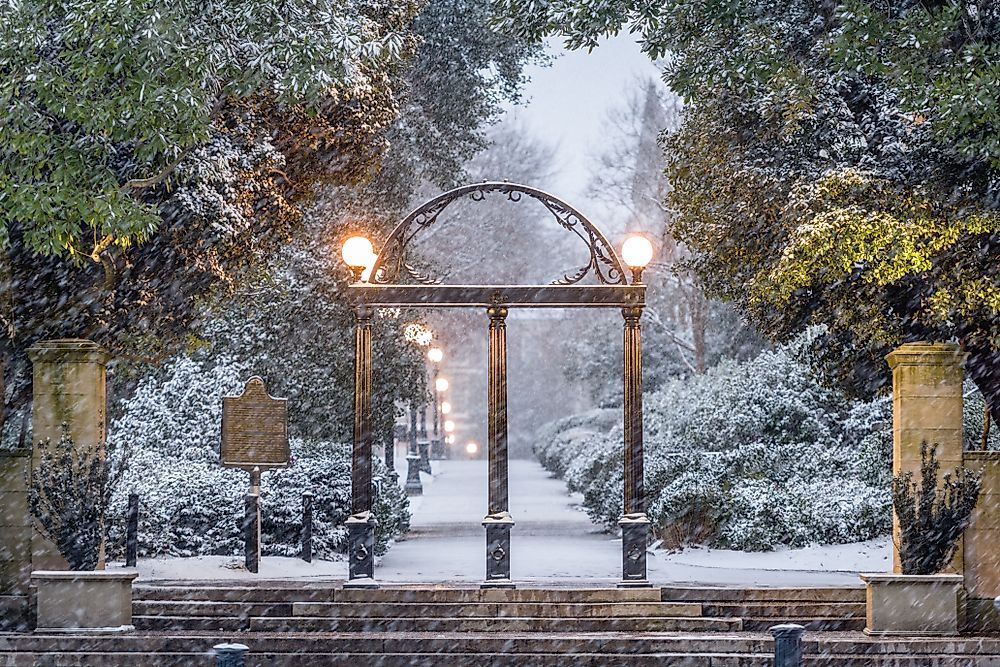Does It Snow In Georgia?

The state of Georgia experiences a humid subtropical climate with long, hot summers, and short but mild winters. The climate is influenced by the Atlantic in the east and the mountainous region in the north. The Chattahoochee River divides the state into various climatic zones. The mountainous region in the north-west experiences cooler climatic conditions than the rest of the state. December and January are the coldest months while July and August are the warmest.
Does it Snow in Georgia?
Georgia experiences a mild winter between mid-December and mid-January. The southern and southeastern regions of the state receive snow less frequently compared to other parts. Georgia Piedmont experiences cooler temperatures during winter compared to the coastal parts. The southern regions of Piedmont receive minimal snow at least once a year, but the region next the foothills receive snow several times. Northern Piedmont is characterized by freezing rain during the winter. The mountainous region of the state experience cool climate and therefore frequent snowfalls of between 4 and 18 inches annually although this is lower than other parts of the Appalachians. Some counties in the mountainous regions including Union, Pickens, Gilmer, and Fannin receive less snow of 3 and 8 inches annually. Areas above 4,000 feet experience ferocious inters with snowstorms covering the mountain tips. The counties in the far north can experience 5 inches of snow in 12 hours and up to 7 inches in 24 hours. Authorities in the state issue snow warnings whenever there is more than 50% chance of receiving more than two inches of snow in 12 hours or four inches in 24 hours. An ice storm warning is issued when icy conditions are imminent. Although it snows occasionally, blizzards in the states are rare, and the last was in 1993. During the winter, daytime temperature in northern Georgia averages 10 °C (50 °F) and 21 °C (70 °F) in the south and along the coast.
Tropical Cyclones and Tornadoes
Georgia experiences several tropical cyclones, but it is rarely hit by direct hurricanes because of its short coastline. The relatively weak Hurricane David of 1979 was the last to directly land on Georgia while the last time a category 3 or higher hurricane directly affected the state was in 1879. The Florida Panhandle weakens the hurricanes that would otherwise cause significant damage in Georgia. Other tropical storms bruise the Georgia coast before unleashing fury to the Carolinas. The state also experience frequent tornadoes, but most are the F1 category. The northern and southwestern part of the state reports the largest number of tornadoes. Every year about three F3 category or higher tornadoes are reported.











